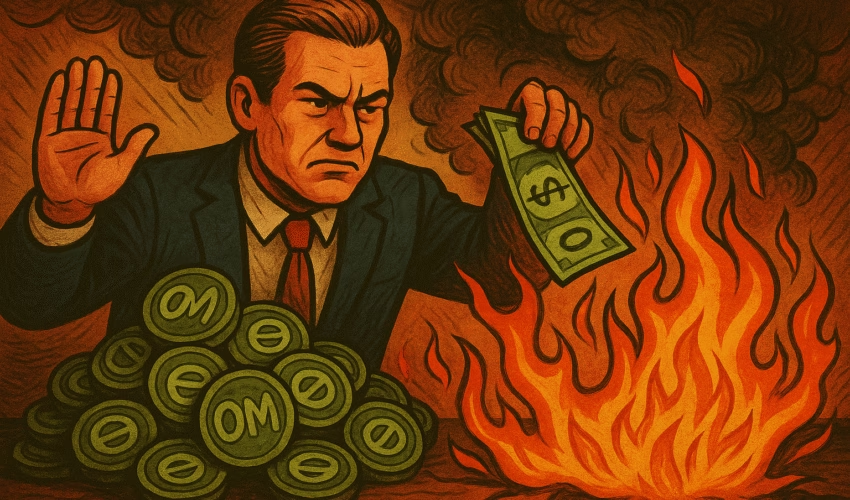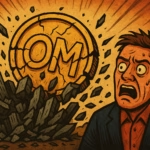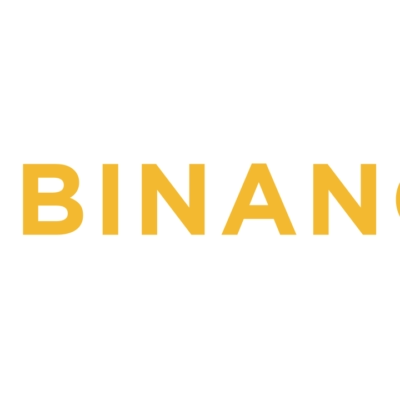Drastic Move Aims to Regain Community Trust After $5.5B Value Wipeout
In an attempt to restore trust in the Mantra (OM) project after its token plummeted over 90% in value, CEO John Mullin has pledged to burn the team’s entire allocation of OM tokens.
“I’m planning to burn all of my team tokens,” Mullin wrote on X (formerly Twitter) on April 16.
“And when we turn it around, the community and investors can decide if I have earned it back.”
The teams token allocation are actually vesting only starting in 2027, which is 30 months from mainnet launch (Oct. 24).
I’m planning to burn all of my team tokens and when we turn it around the community and investors can decide if I have earned it back. 🫡🕉️ https://t.co/ZQR1H5xAqF
— JP Mullin (🕉, 🏘️) (@jp_mullin888) April 15, 2025
The burn would apply to 300 million OM tokens, representing 16.88% of the network’s total supply of 1.78 billion OM, according to a company blog post from April 8. The tokens are currently locked and were scheduled to unlock gradually between April 2027 and October 2029.
At OM’s current trading price of approximately $0.78, the team tokens are worth around $236 million, though they were previously valued at over $1.89 billion before OM’s collapse on April 13, when the price crashed from $6.30 to a low of $0.52.
Community Reactions Divided on Token Burn Strategy
While many in the Mantra community welcomed Mullin’s pledge as a gesture of accountability, some voices within the crypto industry questioned whether the move could undermine long-term project incentives.
“This would be a mistake,” said Ran Neuner
“We want teams that are highly incentivized. Burning the incentive may seem like a good gesture but it will hurt the team motivation long term.”
Mullin floated the idea of making the token burn subject to a decentralized vote, allowing the community to have the final say on whether the drastic action should be carried out.
OM Collapse Sparks Recovery Plan and Transparency Push
Mullin has also promised a full post-mortem on the OM collapse, stating that the project must be transparent in how it recovers from what many have called one of the most stunning token implosions since Terra (LUNA).
In an interview with Cointelegraph on April 14, Mullin laid out initial recovery steps, which include leveraging the project’s $109 million Mantra Ecosystem Fund to execute token buybacks and additional burns in order to stabilize OM’s price.
He also reiterated that Mantra denies all allegations of insider trading or controlling 90% of OM’s supply—claims that have circulated widely following the crash.
“The implosion was caused by reckless liquidations, not internal manipulation,” Mantra said in an official statement.
1) A quick note to say how much I appreciate all the support the MANTRA team has received in the past 36+ hours. The support and kind words have come from many sources – from partners, investors, friends, and from the wider Web3 community. Thank you.
— JP Mullin (🕉, 🏘️) (@jp_mullin888) April 15, 2025
Exchanges Deny Wrongdoing Amid Liquidation Fallout
The collapse, which wiped out over $5.5 billion in OM’s market value, occurred amid unusually high trading volume on platforms like OKX and Binance—leading some observers to suspect coordinated manipulation.
However, both exchanges have denied involvement, attributing the meltdown to:
-
Changes made to OM’s tokenomics in October
-
Cross-exchange volatility
-
An avalanche of forced liquidations triggered on April 13
These market dynamics created a perfect storm that overwhelmed liquidity and led to a freefall in OM’s value—a crisis that Mullin’s team is now racing to contain.
Final Thoughts: A Bold Move or a Risky Gamble?
Burning the team’s token allocation is arguably one of the most extreme accountability measures a crypto project leader has ever proposed. While it may bolster investor confidence in the short term, it also raises questions about how Mantra will incentivize developers and contributors over the long term without a meaningful stake in the network.
Whether this move ultimately revives OM’s credibility or backfires remains to be seen. What’s clear is that the trust equation in crypto is more fragile than ever—and recovering from a public collapse requires more than just capital. It requires transparency, humility, and consistent execution. Mullin has made his first big move. Now the community will decide what comes next.












